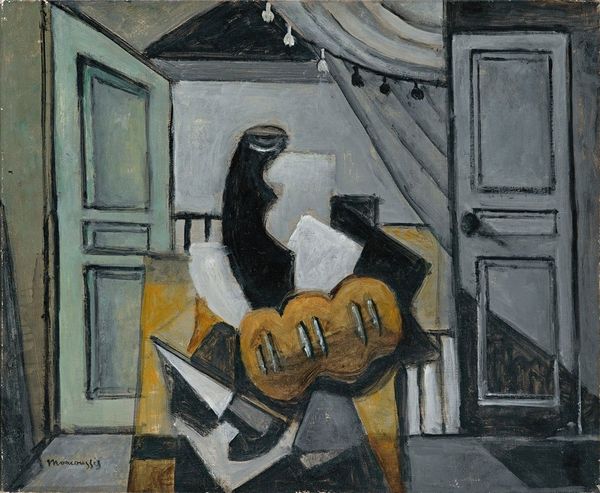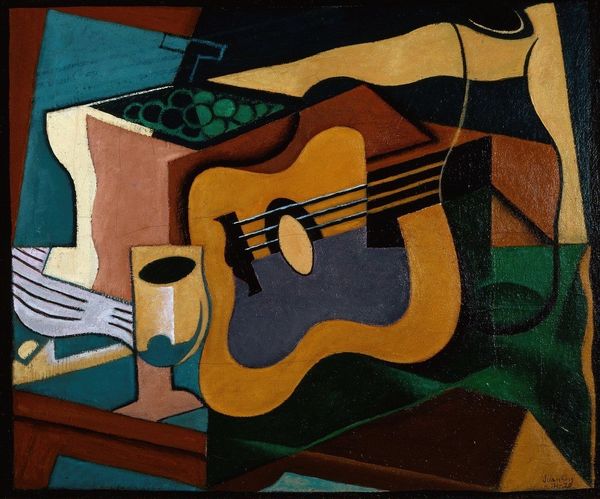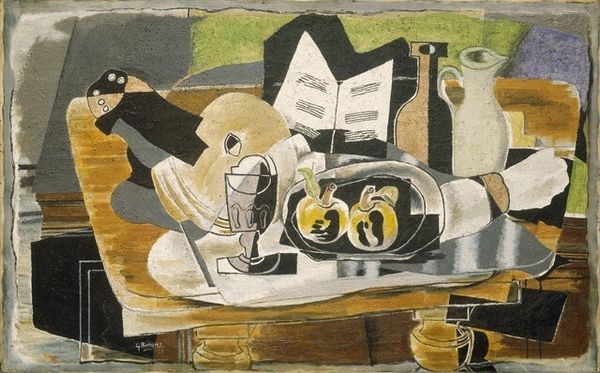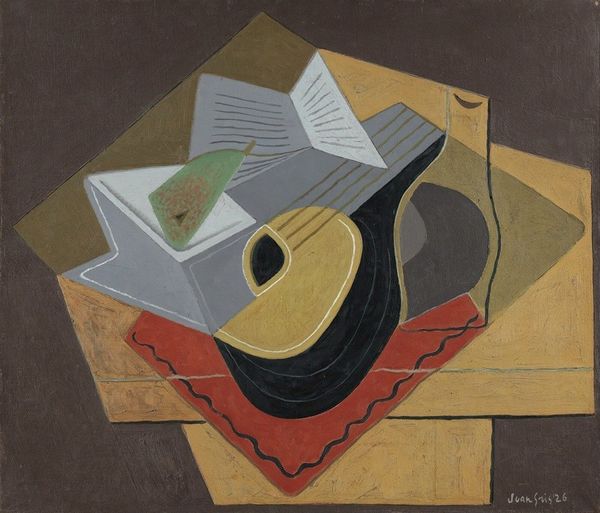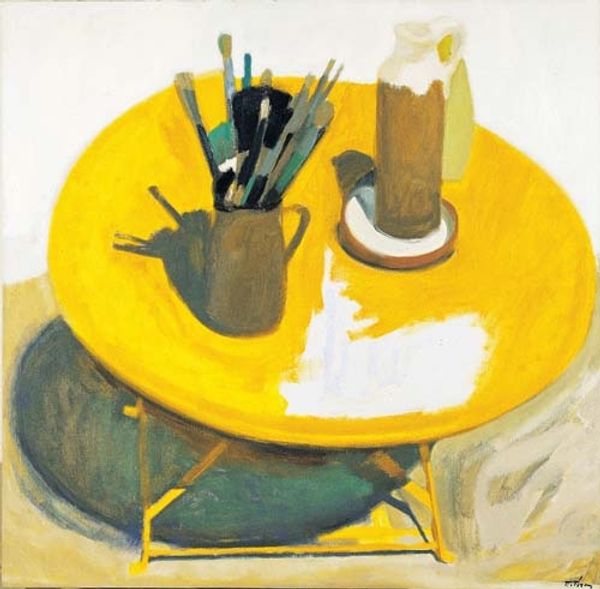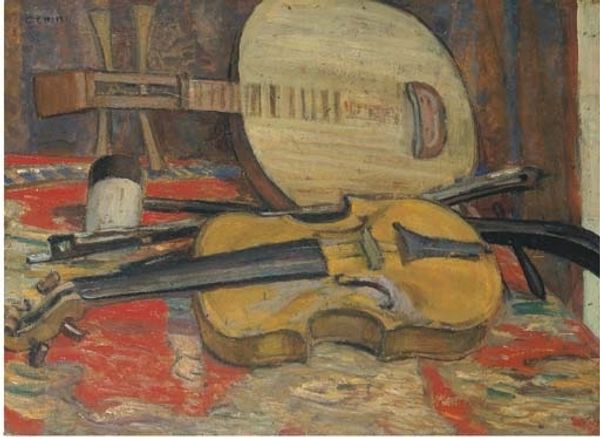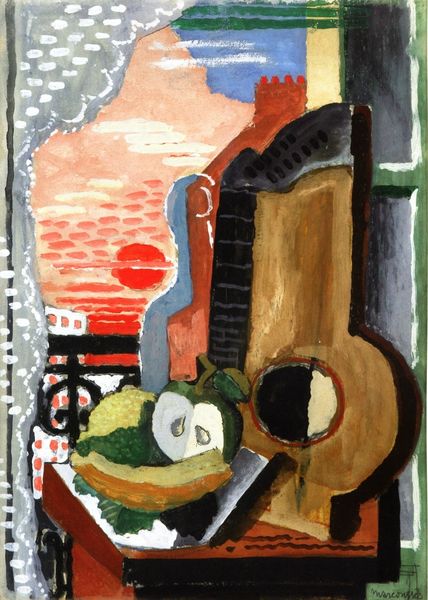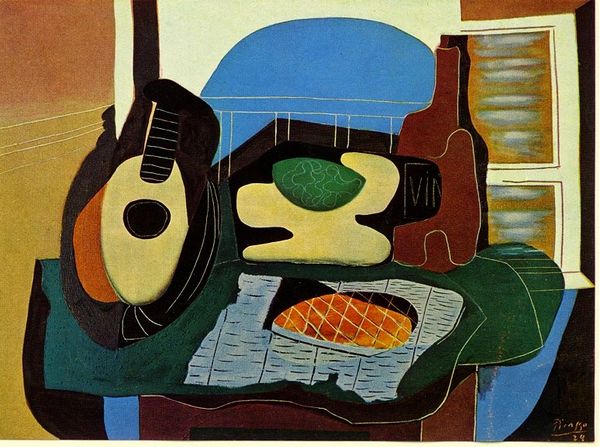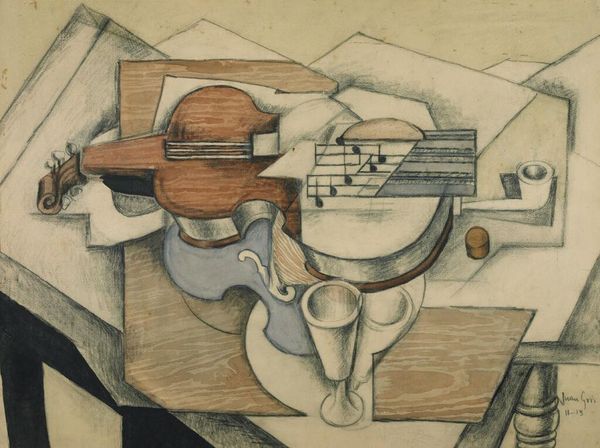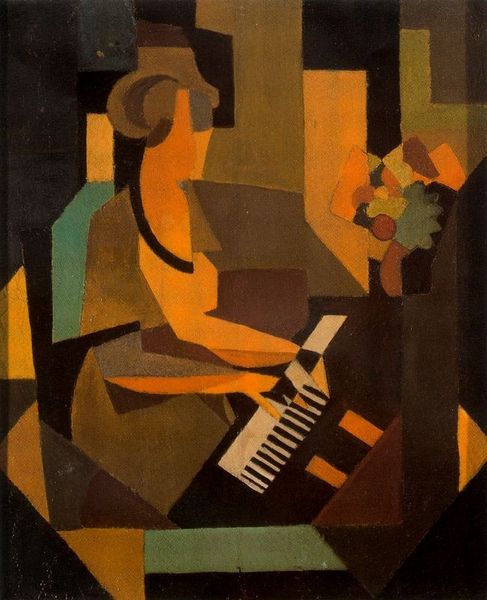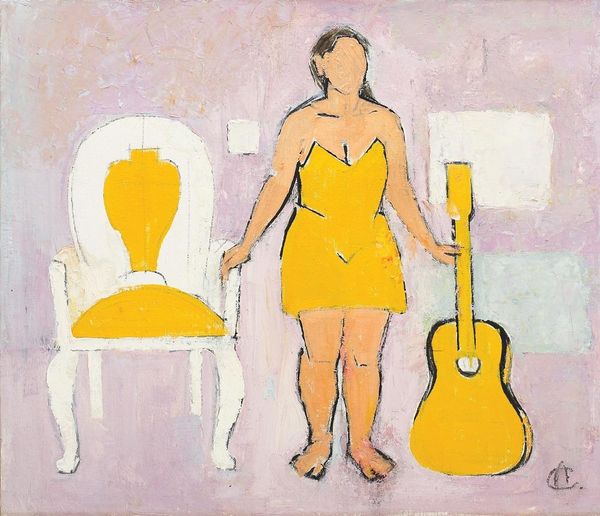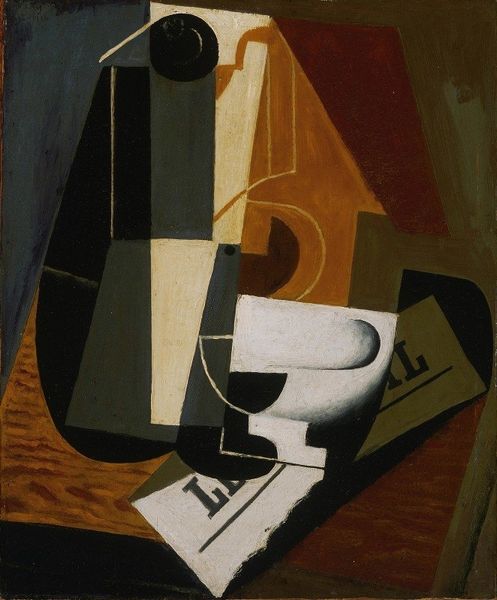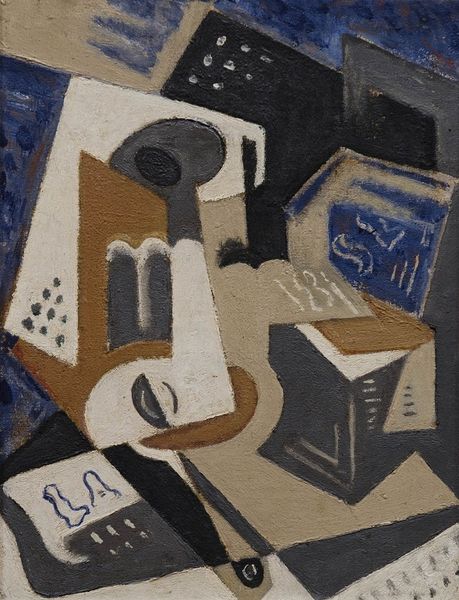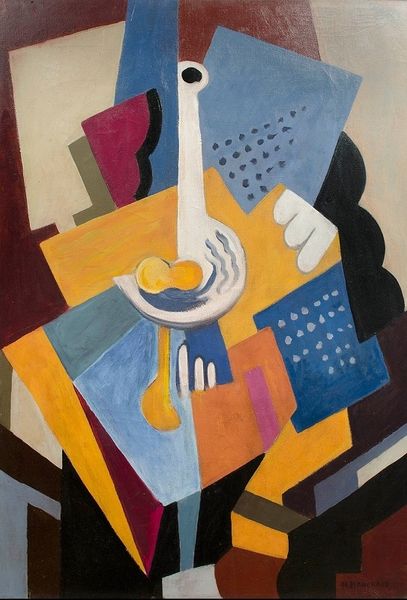
oil-paint
#
cubism
#
oil-paint
#
oil painting
#
abstraction
#
modernism
Copyright: Henri Catargi,Fair Use
Curator: What do you make of this “Still Life With Guitar and Pipe” created by Henri Catargi in 1959? Editor: There's a subdued elegance. It’s very muted and still—almost mournful, even though it’s a still life! The gentle ochres and creams are lovely. Curator: I’m intrigued by how Catargi is engaging with cubist principles here, flattening and fracturing the familiar forms, while keeping everything firmly within the representational. He's abstracting the guitar, pipe, book, even the candlestick, but there’s no real confusion about what each object is. Editor: It's a domesticated cubism, perhaps? It feels so consciously modern but restrained—not making too much noise politically. You imagine it hanging comfortably in someone’s home, declaring good taste and quiet appreciation. What does it tell us about the artist and the time period? Curator: We see a clear continuation of certain modernist aesthetic preferences regarding geometric shapes, simplified forms, and symbolic object placement. In that sense, it reflects postwar attempts to recover, to rebuild not just structures but cultural confidence, finding solace and continuity through artistic expression. The pipe, of course, as a classic vanitas symbol, adds another layer. Editor: And the book as a vessel of knowledge... and the leaf? Why the leaf? It injects a needed element of freshness into the somewhat austere, academic composition, no? It whispers of the natural world and its inevitable decay. Curator: Indeed! It gives life and underscores themes of time and existence. It humanizes what could otherwise be a sterile exercise in form. Perhaps Catargi reminds us here that art's enduring power resides in its capacity to transform the mundane, such as a simple arrangement of everyday objects on a table, into profound and enduring reflections of the human condition. Editor: A nice encapsulation. Ultimately, a still and very graceful meditation.
Comments
No comments
Be the first to comment and join the conversation on the ultimate creative platform.
